Disclosure: This article contains affiliate links. We may earn a commission from purchases at no extra cost to you, which helps our travel content.
When I was seven years old, my father spread out a faded photo album filled with sepia-toned images of massive stone chariots, towering gopurams, and mysterious temple ruins scattered among giant boulders. 'This is Hampi, beta,' he said, 'the last great capital of our ancestors' Vijayanagara Empire.' Those childhood images stayed with me for decades, like scenes from some fantastic play waiting for me to step onto its ancient stage. Last winter, I finally returned to my motherland to explore this UNESCO World Heritage Site in Karnataka. Armed with my trusty daypack, a modest budget, and an insatiable curiosity about my heritage, I embarked on a week-long solo adventure through what feels like a surreal open-air museum where history, mythology, and nature create the most extraordinary theatrical production imaginable.
Arriving in Hampi: A Theatrical Entrance to Another Time
The journey to Hampi is itself an opening act worthy of Broadway. After flying into Bengaluru, I took an overnight train to Hospet Junction—the nearest railway station to Hampi, about 13km away. Yeh safar (this journey) gave me time to mentally prepare for what awaited. As dawn broke, I hired an auto-rickshaw for the final stretch, watching as the landscape transformed from ordinary Indian countryside to something otherworldly.
The moment you enter Hampi, you're transported 500 years back in time. The terrain is unlike anything else in India—enormous rust-colored boulders balanced precariously atop one another as if arranged by some divine set designer. Between these natural formations lie the scattered remains of what was once one of the richest and largest cities in the world.
I checked into a modest guesthouse in Hampi Bazaar for just ₹800 ($10) per night. The area is divided by the Tungabhadra River into two distinct zones: the main Hampi Bazaar area with the major temple complexes and ruins, and the more laid-back Hippie Island (Virupapur Gaddi) across the river. Both have their own charm, but I chose to stay on the main side for easier access to the primary historical sites.
After settling in, I wandered to a small rooftop café overlooking the majestic Virupaksha Temple, ordering a simple breakfast of idli and filter coffee. As I sat there watching the morning light transform the ancient stones from cool gray to warm amber, I realized that Hampi wasn't just going to be a trip—it was going to be a pilgrimage back to my roots.
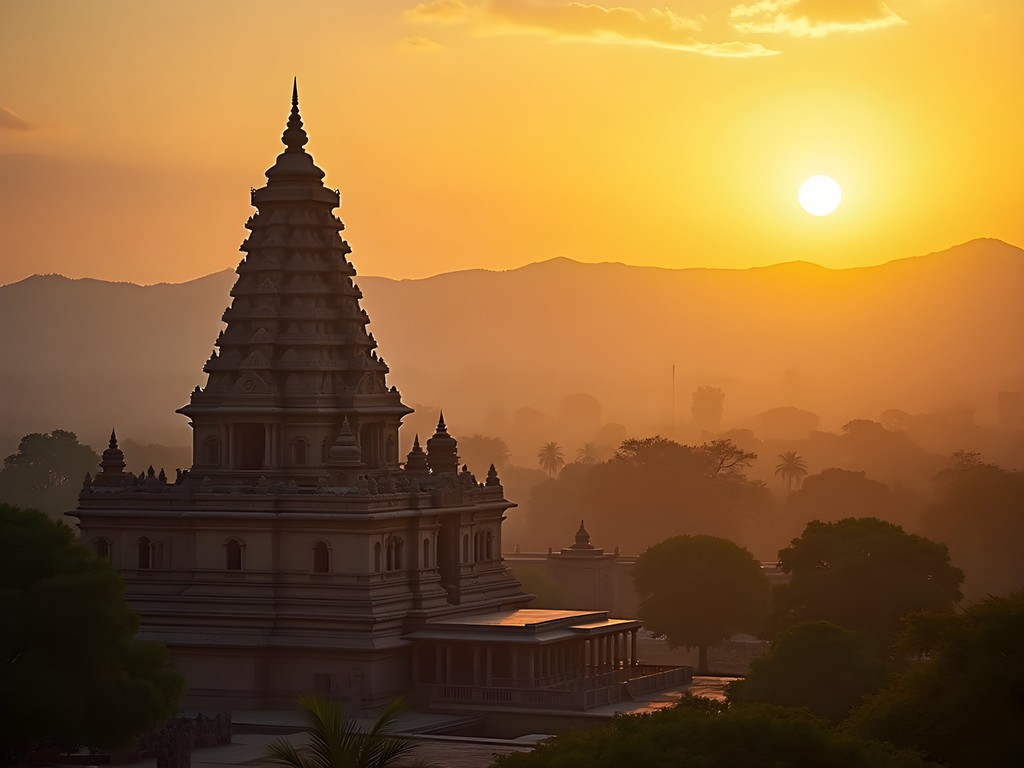
💡 Pro Tips
- Book train tickets to Hospet Junction at least a week in advance through IRCTC website or app
- Stay in Hampi Bazaar area if you're focused on historical sites; stay in Hippie Island if you want a more relaxed vibe
- Carry cash as ATMs are limited and many smaller establishments don't accept cards
Exploring the Sacred Center: Virupaksha to Vittala
My exploration began where Hampi's heart still beats—the 7th-century Virupaksha Temple, one of the few structures still functioning as a place of worship. Removing my shoes at the entrance (as is custom), I joined the flow of pilgrims and tourists alike. Inside, a temple elephant named Lakshmi blessed visitors with her trunk for a small donation. The temple's inner sanctums reveal intricate carvings depicting scenes from Hindu mythology—like elaborate natya (dance) performances frozen in stone.
From Virupaksha, I followed the ancient processional route toward the Vittala Temple Complex, arguably Hampi's most iconic site. Rather than taking motorized transport, I chose to walk the 2km stone pathway, passing crumbling pavilions and shrines along the way. This path follows the historic King's Road that once hosted elaborate royal processions.
The Vittala Temple left me speechless. Its famous stone chariot—featured on our ₹50 note—stands in the courtyard, an engineering marvel carved from a single boulder. But the true magic lies in the musical pillars of the Maha-Mantapa (great hall). Each of these 56 pillars, when gently tapped, produces different musical notes. Adbhut! (Amazing!) Though visitors are no longer allowed to play them, guides demonstrate the acoustics by tapping smaller pillars nearby.
I spent hours sketching the intricate carvings in my travel journal, trying to capture the essence of this architectural masterpiece. The afternoon light created dramatic shadows across the carved surfaces, revealing new details with each passing hour.
By late afternoon, I found myself at the Queen's Bath, an Indo-Islamic architectural gem with a large square pool surrounded by ornate balconies and arched corridors. Standing alone in this royal bathing complex, I couldn't help but imagine the elaborate court life that once animated these now-silent stones.
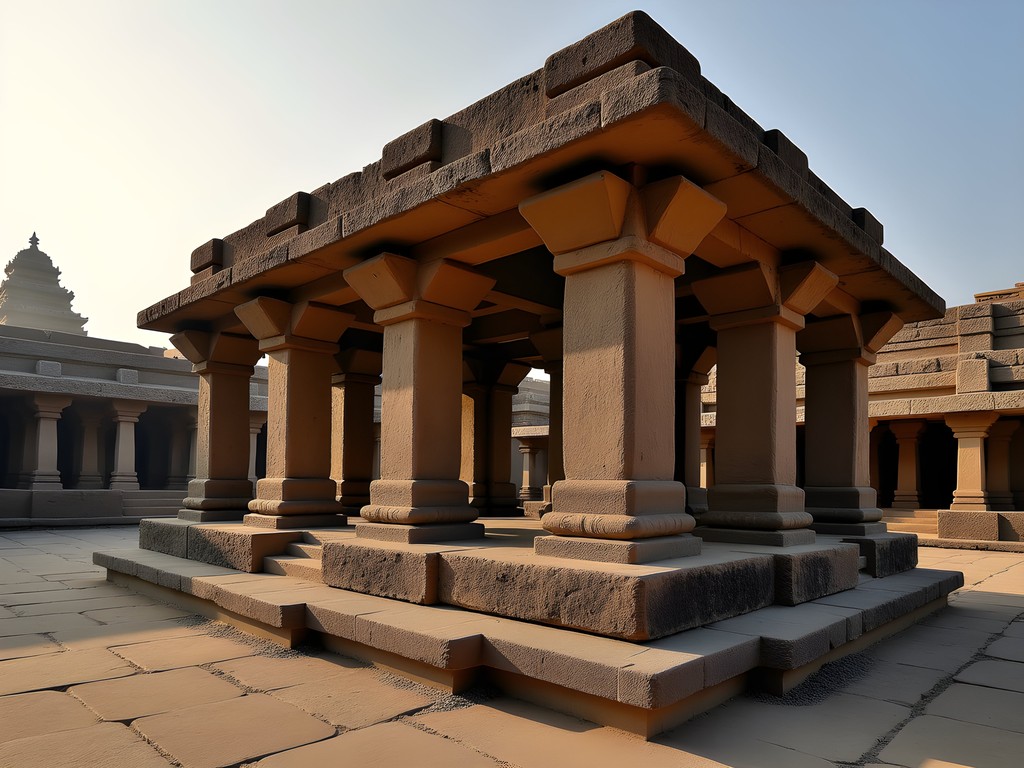
💡 Pro Tips
- Visit Virupaksha Temple early morning (before 8am) to avoid crowds and experience the morning rituals
- Hire a guide for Vittala Temple to understand the significance of the musical pillars and intricate carvings
- Wear easily removable footwear as you'll need to remove shoes at each temple
Beyond the Tourist Trail: Hidden Temples and Sacred Waters
While most visitors stick to Hampi's main archaeological zone, my theatrical instincts drew me toward the less-frequented corners of this vast open-air museum. On my third day, I rented a bicycle (₹150/day) and ventured beyond the tourist circuit.
First stop: Achyutaraya Temple, accessed via a scenic path through a banana plantation. Despite being one of Hampi's largest temple complexes, it receives a fraction of the visitors that flock to Vittala. I spent a peaceful morning exploring its pillared halls and courtyard shrines, occasionally consulting my India guidebook to understand the historical context. The temple's remote location meant I had the entire complex to myself for nearly two hours—a luxury unimaginable at the more popular sites.
Later, I followed a rocky path up Matanga Hill for what many consider Hampi's best panoramic view. The 30-minute climb over uneven terrain was challenging in the midday heat, but my hiking sandals provided excellent grip on the slippery rocks. At the summit stands a small Veerabhadra temple, but the real attraction is the breathtaking 360° vista of Hampi's surreal landscape—the boulder-strewn terrain punctuated by temple spires and the winding Tungabhadra River creating a scene straight from mythology.
"Kitna khoobsurat hai," I whispered to myself—how beautiful it is.
As the afternoon cooled, I cycled to Sanapur Lake, a hidden gem on the outskirts of Hampi. This reservoir, surrounded by palm trees and those distinctive Hampi boulders, offered a refreshing swim after days of temple-hopping. Local children performed impressive dives from the rocks, their laughter echoing across the water. I joined a group of travelers for an impromptu picnic by the shore, sharing stories and the local staple—bisi bele bath (spicy rice and lentil dish) packed in banana leaves.

💡 Pro Tips
- Rent bicycles from shops near Hampi Bazaar—bargain the price down to ₹150/day or less
- Carry at least 2 liters of water when exploring the outlying areas as there are few facilities
- Visit Matanga Hill for sunrise rather than midday to avoid the heat and capture the best photographs
Crossing the River: Hippie Island and Anegundi
No Hampi experience is complete without crossing the Tungabhadra River to explore the contrasting atmosphere of Hippie Island (officially Virupapur Gaddi). The small coracle boats that ferry passengers across are an experience themselves—circular vessels made of bamboo and waterproofed with tar, spun skillfully by boatmen using a single paddle.
The moment you step onto Hippie Island, the vibe shifts dramatically from sacred to laid-back. Riverside cafés with cushioned floor seating serve everything from South Indian thalis to Israeli shakshuka. I settled into a café called Laughing Buddha, ordering coconut porridge while watching the river flow by. The café's resident dog promptly made himself comfortable on my lap, apparently approving of my choice of seating.
"This side shows how Hampi breathes in the present day," explained Ravi, a local who's been running a small guesthouse for fifteen years. "Across the river is our history; this side is our living."
I spent a day exploring the island by scooter (₹300/day), venturing to nearby Anegundi village—believed to be older than Hampi itself and mentioned in the Ramayana as Kishkindha, the kingdom of the monkey gods. The village's narrow lanes led me to Pampa Sarovar, a sacred tank associated with the goddess Parvati, where I witnessed elderly women performing afternoon prayers.
Anegundi's highlight was the Hanuman Temple atop Anjaneyadri Hill, believed to be the birthplace of the monkey god Hanuman. The 570 steps to the summit tested my endurance, but the spiritual energy at the top—and the view—made it worthwhile. I timed my visit for sunset, when the dying light bathed the entire Hampi landscape in an ethereal golden glow. As darkness fell, the temple priest performed aarti (ritual of light), the small oil lamps creating dancing shadows against ancient walls.
Before returning to my guesthouse, I joined an impromptu drumming circle on Hippie Island, where travelers from across the globe shared music and stories under a canopy of stars. The juxtaposition wasn't lost on me—ancient spiritual energy across the river, and here, a different kind of communion taking place.
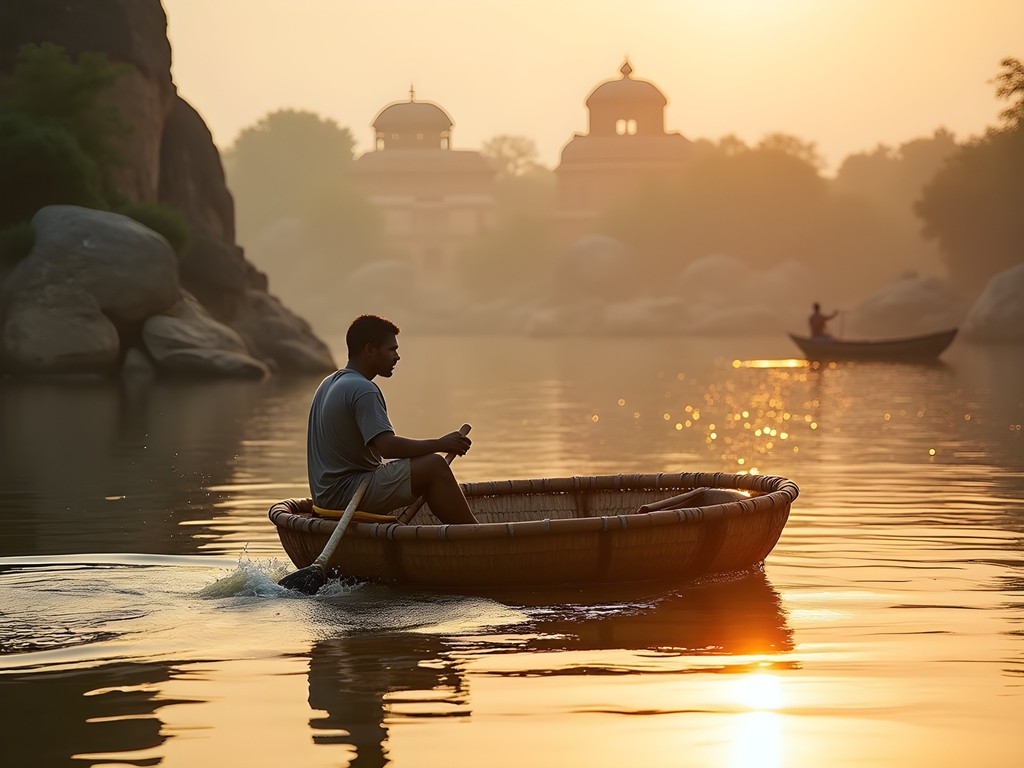
💡 Pro Tips
- Coracle boat rides cost ₹20 per person, but prices increase after sunset—negotiate before boarding
- When renting scooters on Hippie Island, check the vehicle thoroughly and document any existing damage
- The steps to Hanuman Temple are steep—carry water and time your climb for early morning or late afternoon to avoid the midday heat
Living History: Connecting with Local Artisans
For all its archaeological wonders, Hampi's true soul resides in its people—the descendants of those who built and maintained these monuments for centuries. On my fifth day, I sought out the local artisans who keep traditional crafts alive.
In a small workshop near Hampi Bazaar, I met Krishnappa, a third-generation stone carver creating miniature replicas of Hampi's famous monuments. His hands, weathered and strong, moved with practiced precision as he demonstrated how to chisel the intricate details of a small stone chariot.
"My grandfather worked on restoring some of the temples you see today," he told me, his eyes never leaving his work. "Now tourists want small pieces to remember Hampi by. Times change, but the stone remains."
For ₹500, I joined a two-hour workshop where Krishnappa patiently taught me the basics of stone carving. My theatrical background gave me an appreciation for craftsmanship, but my attempts at creating even simple geometric patterns proved humbling. I left with a crudely carved lotus medallion and newfound respect for the artisans who created Hampi's masterpieces without modern tools.
Later that afternoon, I visited a small textile workshop where women wove traditional kasuti embroidery, an intricate Karnataka craft featuring geometric patterns. Lakshmi, the elderly matriarch, showed me how different motifs represent elements from Hindu mythology—the same stories depicted in the temple carvings, now translated into thread.
I spent the evening at a local family's home for dinner, arranged through my guesthouse. Sitting cross-legged on the floor, I helped Jayamma prepare jolada rotti (sorghum flatbread) and baingan bharta (smoky eggplant curry) in her modest kitchen. As we cooked, she shared stories of growing up in Hampi's shadow, playing hide-and-seek among ruins that tourists now pay to visit.
"For us, these are not just old stones," she said, skillfully flipping a rotti on the wood-fired stove. "They are our ancestors watching over us."
Over dinner, her husband Venkatesh explained how tourism has transformed their community—bringing economic opportunities but also challenges to their traditional way of life. Their teenage son, glued to his smartphone, represented the inevitable march of modernity, even in this ancient landscape.
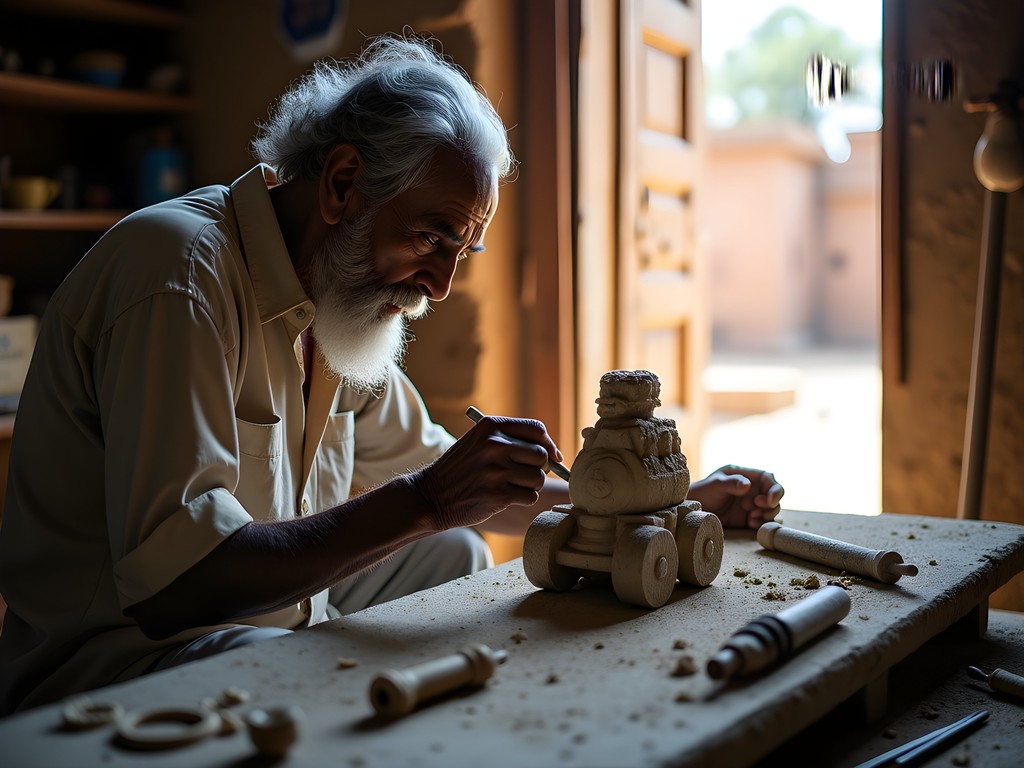
💡 Pro Tips
- Book artisan workshops through your guesthouse or the Hampi Bazaar information center for the best rates
- When purchasing crafts, buy directly from artisans rather than tourist shops to ensure authentic work and fair prices
- Home-cooking experiences can be arranged for ₹300-500 per person and offer insight into local life beyond the ruins
The Final Act: Sunrise at Hemakuta Hill
For my final morning in Hampi, I rose before dawn and made my way to Hemakuta Hill—a rocky outcrop dotted with early ruins and small shrines. In the pre-dawn darkness, I carefully picked my way up the stone steps, headlamp illuminating the path ahead.
Reaching the summit, I found a flat boulder facing east and settled in for nature's grand performance. As the first hint of light appeared on the horizon, the landscape began to reveal itself—first in silhouettes, then gradually in increasing detail. The massive boulders, so distinctive to Hampi, created dramatic shadows against the lightening sky.
Slowly, the sun crested the horizon, painting the ancient stones in warm amber light. The Virupaksha Temple's gopuram caught the first rays, its ornate tower glowing as if illuminated from within. Across the boulder-strewn landscape, temples and pavilions emerged from darkness like actors taking their positions on a vast stage.
"Wah, kya nazara hai," I whispered—what a view.
I wasn't alone in my appreciation. A small group of sadhus (holy men) had gathered nearby for morning prayers, their chants providing a soundtrack to the visual spectacle. A few other travelers sat in respectful silence, cameras ready but waiting for the perfect moment.
As the sun rose higher, Hampi awakened. Smoke from cooking fires rose from the small settlements nestled among the ruins. Temple bells rang in the distance. Monkeys began their daily acrobatics among the boulders. The theatrical production that is Hampi—part historical drama, part spiritual journey, part natural wonder—began another day's performance.
I spent my final hours wandering without agenda, letting my feet and curiosity guide me to small shrines and hidden corners I'd missed in my more structured exploration. Near the Achyutaraya Temple bazaar, I discovered a small shrine where a priest was performing puja (worship) to a Nandi bull statue so worn by time and devotion that its features had softened into abstraction.
"How old is this shrine?" I asked in my rusty Hindi.
The priest smiled. "Who can say? The empire fell five centuries ago, but worship never stopped."
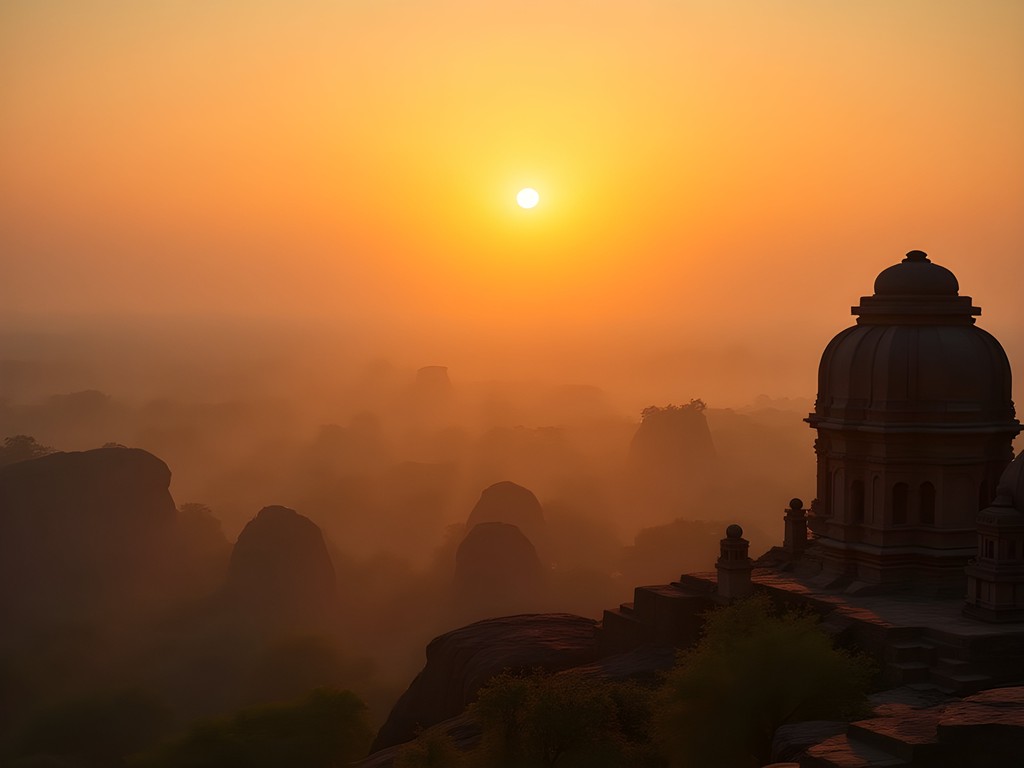
💡 Pro Tips
- Reach Hemakuta Hill at least 30 minutes before sunrise to find a good viewing spot
- A good headlamp is essential for the pre-dawn climb as the stone steps can be uneven and slippery
- Bring layers as mornings can be surprisingly cool, even in winter months
Final Thoughts
As my auto-rickshaw bumped along the road back to Hospet station, I found myself in that bittersweet state familiar to all travelers—simultaneously satisfied yet reluctant to leave. Hampi isn't merely a collection of impressive ruins; it's a living connection to my ancestral heritage, a place where past and present dance together in perpetual performance.
Whether you're drawn by architectural wonders, spiritual significance, or simply the otherworldly landscape, Hampi offers a uniquely immersive experience that belies its budget-friendly nature. The ancient capital may have fallen centuries ago, but its spirit endures—in crumbling stone edifices, in the hands of local artisans, and in the daily rhythms of life that continue among the ruins.
As we theater folks say, the show must go on. And in Hampi, what a spectacular, centuries-long production it has been. Phir milenge, Hampi—until we meet again.
✨ Key Takeaways
- Hampi rewards slow exploration—allow at least 3-4 days to appreciate both the main sites and hidden gems
- Balancing time between the main archaeological zone and Hippie Island offers a more complete experience
- Connecting with local artisans and families provides cultural context that enhances the historical sites
- Early mornings and late afternoons offer the best light for photography and more comfortable temperatures for exploration
📋 Practical Information
Best Time to Visit
November through February (winter)
Budget Estimate
₹1500-2500 ($20-35) per day including accommodation, food, and local transportation
Recommended Duration
5-7 days
Difficulty Level
Intermediate

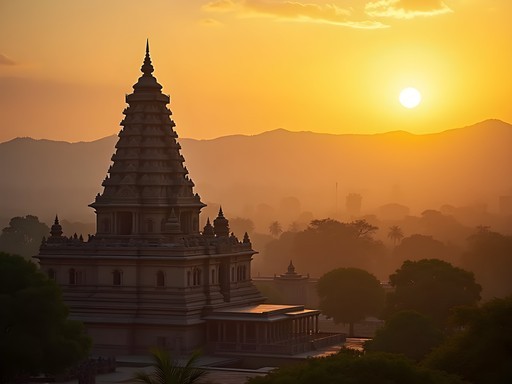
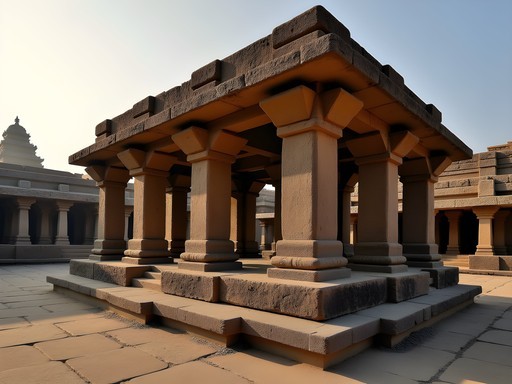

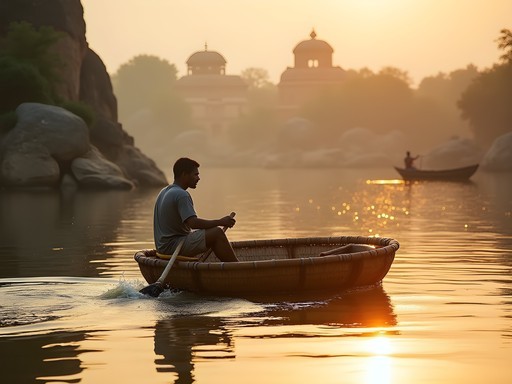
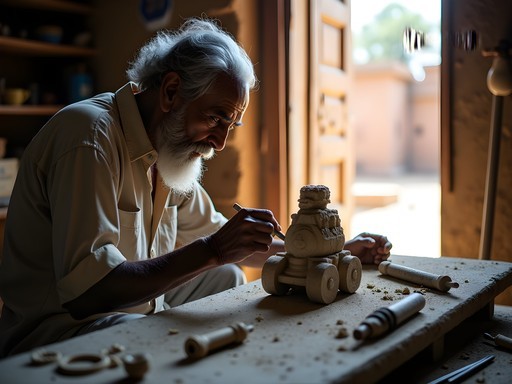
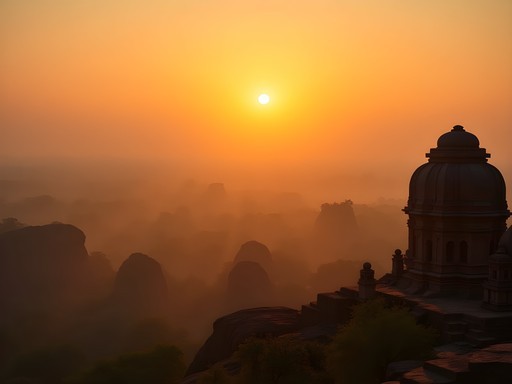


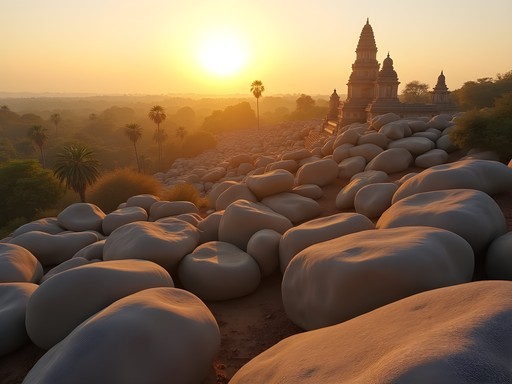






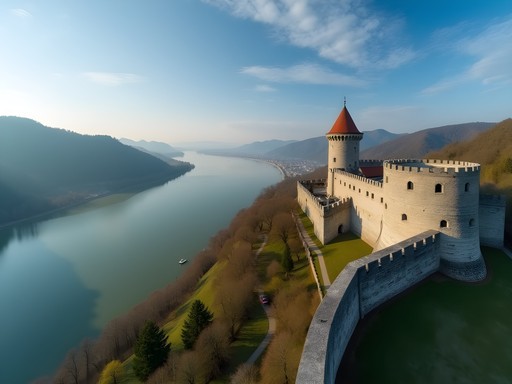
Comments
Taylor Moreau
Excellent piece on Hampi, Kyle. Having visited numerous UNESCO sites across India, I find Hampi particularly compelling for its scale and preservation state. One practical tip for photographers: the light is most dramatic in January-February when the morning mist creates an ethereal quality around the ruins. I'd also suggest visitors allocate time for the Achyutaraya Temple complex - often overlooked but offering remarkable architecture without the crowds of Vittala. The Archaeological Museum in Kamalapuram is also worth a visit for context before exploring the ruins. For those with limited mobility, note that the terrain is quite challenging in places - proper footwear is essential.
escapeexplorer
Thanks for the photography tip! Definitely going to plan my next visit for February then!
winterguy
Those boulders look unreal! Bucket list destination for sure.
escaperider
Great post! I'm planning to visit next month. How did you get from Hospet to Hampi? Is the local bus reliable or should I arrange private transport? Also, is crossing to the Hippie Island side worth it for a day trip?
redguide
Not the author but we took local buses everywhere in the area. Super cheap and frequent between Hospet and Hampi. And yes, definitely cross the river - different vibe entirely!
escaperider
Thanks for the info! Good to know about the buses.
Sophia Gomez
Kyle, your writing transported me right back to Hampi! I visited during monsoon season two years ago, which was risky but rewarded us with emerald green rice paddies contrasting against those rust-colored boulders. The Tungabhadra River was fierce though! For anyone planning to visit, I highly recommend staying at least 3 full days. We rushed through in 2 and missed so much. Also, that sunrise climb to Matanga Hill you mentioned is absolutely worth the early wake-up call - I used my headlamp for the pre-dawn hike up and got some incredible photos as the light hit the ruins. Your section on the 'Hidden Temples' gave me several spots to add to my return visit list!
winterguy
Was it very wet during monsoon? Thinking of going but worried about rain.
Sophia Gomez
It rained daily but usually in short, intense bursts in the afternoon. Mornings were generally clear. Just pack a good raincoat and plan indoor activities (like the archaeological museum) for the afternoons!
redguide
Those boulder formations are insane! Great photos.
escapeexplorer
OMG Kyle! Your post brought back so many memories! I visited Hampi last year and was completely blown away by those stone chariots. That moment when you first see the Vittala Temple... just WOW! Did you get a chance to hear the musical pillars? Our guide showed us how they make different sounds when tapped. Wish I'd known about some of those hidden temples you mentioned though - definitely saving this for my next trip!
Taylor Moreau
The musical pillars are truly remarkable. I was fortunate enough to visit before they restricted direct contact with them. Now guides demonstrate the sounds by tapping nearby surfaces instead, still impressive but not quite the same experience.
escapeexplorer
Oh really? I didn't know they changed the rules! Glad I got to experience it when I did then!
summerguy
Pro tip: visit Sanapur Lake if you need a break from temple hopping. Great swimming spot!
hikingmate7104
Great post! How was getting around Hampi? Is renting a scooter the best option or did you use auto-rickshaws? I'm planning a trip in October and trying to figure out the logistics.
summerguy
Not OP but I used both when I was there. Scooter on Hippie Island side, rickshaws on temple side. Works well!
greenlegend
Those boulders look insane! Nature + history = perfect combo
Sage Dixon
Kyle, your description of crossing the river to Hippie Island brought back such vivid memories! That coracle boat ride is an adventure in itself. I remember clutching my waterproof bag for dear life as we spun in circles halfway across. One tip for anyone heading to Hampi - don't miss the sunset from Matanga Hill. It's a bit of a climb but watching the golden light spread across those boulder-strewn ruins is something I'll never forget. The contrast between the ancient structures and natural landscape is just breathtaking.
Venture X
Premium card with 2X miles, $300 travel credit, Priority Pass